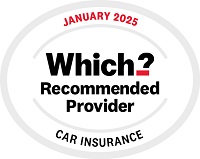Insurance overview
As your driving habits and the type of car that you drive change, we know that the cover that you need changes too.
That's why our Comprehensive Car Insurance includes cover specifically tailored to electric and hybrid vehicles, while providing the same high quality level of cover you'd get when insuring a petrol or diesel car.
What's included:
- Battery cover: Whether leased or owned, cover against accidental damage, fire and theft.(i)
- Charging cables, chargers and home wall boxes, and adapters: All covered in the event of insured damage plus protection should someone trip over the cables and you are at fault.(ii)
- Mutual Assist breakdown cover provided by the RAC.(iii)
- RAC EV Boost at the roadside to get you to the nearest charging point.
- Lifetime guarantee on repairs: British Standard accredited bodyshops, plus use of manufacturer repairers when required, for as long as you own the vehicle, when you use the recommended repairer scheme.(iv)
- No Claims Discount protected if you’re hit by an uninsured driver and no excess to pay.(v)
- New car replacement: if you purchase a UK model from new and it’s less than two years old when it’s stolen or written off. A whole year longer than many other insurers.
- Motor Legal Protection (administered by ARAG UK): giving you access to legal advice and covering legal costs up to £100,000.
- Small courtesy car in the UK for the duration of repairs carried out by our recommended repairers; or up to 14 days if yours is written off or stolen.
What isn't included:
- Breakdowns outside the UK, within ¼ mile from home or recovery distance greater than 20 miles.
- Any excess, which is the amount you’ll need to pay towards a claim. Your policy documents will outline where these apply.
- Loss of value over time, damage to tyres and wear and tear.
- Personal possessions not kept in a locked vehicle, boot or glove compartment.
- Cash, tickets, stamps and cheques.
- Loss or damage caused by a cyber act, including any software failure or the vehicle computer system not functioning as designed.
(i)Cover of leased batteries subject to acceptance.
(ii)Vehicle chargers and cables must be of your car's manufacturer specification and/or professionally installed and maintained at your home.
(iii)Excludes motorhomes, campervans and any vehicle with a gross weight of 3500kg or over or a length greater than 6.4 metres.
(iv)This includes lifetime guarantee on paintwork and manufacturers guarantee on parts.
(v)You must advise us of the uninsured driver’s details, make, model and registration of the vehicle and details of any independent witnesses. We will deduct excesses and reduce no claims discount until satisfied the uninsured driver is at fault.
The features and exclusions listed are not exhaustive. Your cover will depend on your circumstances. You can find further information in the Important documents section.
Specialist breakdown cover
Our Car Insurance policies include Mutual Assist breakdown cover from the RAC as standard*. RAC's expert patrols are fully trained to know your electric or hybrid vehicle inside and out in the event of a breakdown.
No more range anxiety with EV boost: RAC's EV boost at the roadside to get you to the nearest charging point.
Rapid recovery: If your vehicle can't be fixed at the roadside, RAC's range of high tech vans can lift all four wheels off the ground to tow you to the nearest garage**, saving you time and protecting your vehicle
* Breakdowns in the UK at least ¼ mile from home and where the total recovery distance is under 20 miles.
**You can upgrade to National Assist for just £19.99 and get recovery to anywhere in the UK or include the reassurance of cover for breakdowns at home with National plus Home Assist for £34.99.


